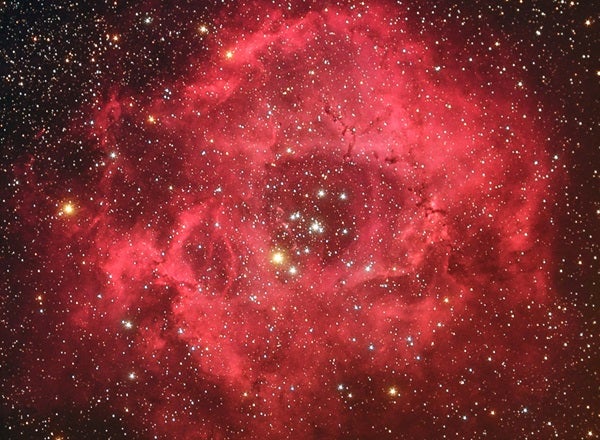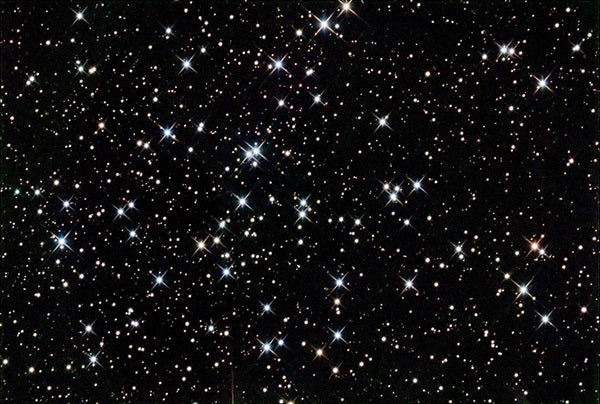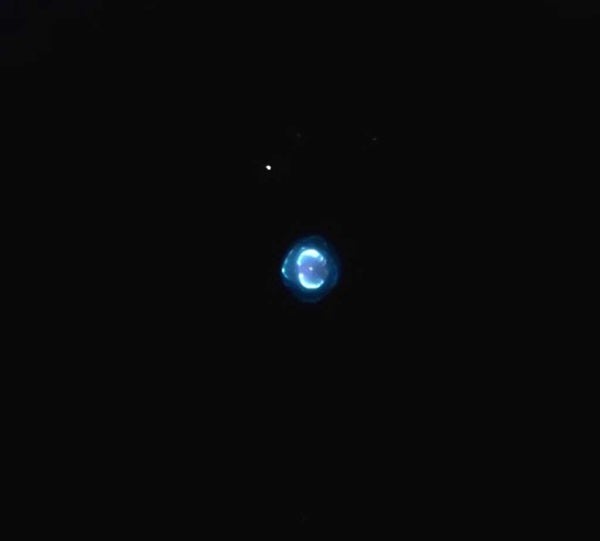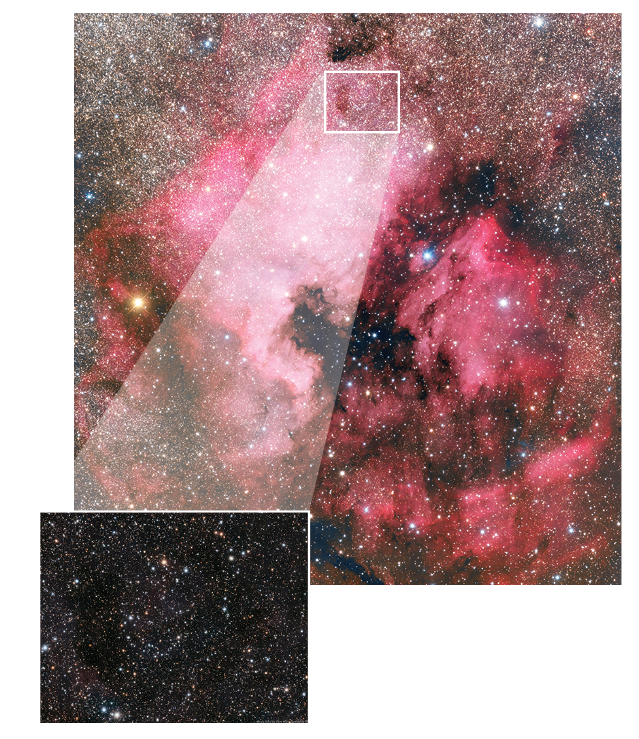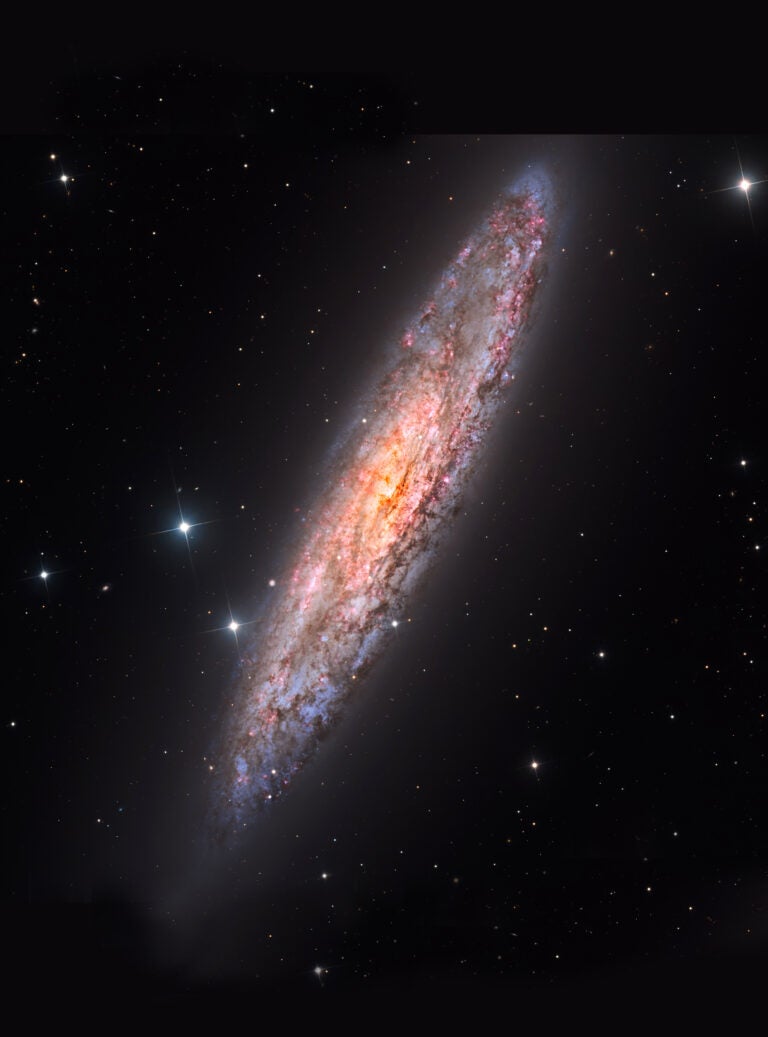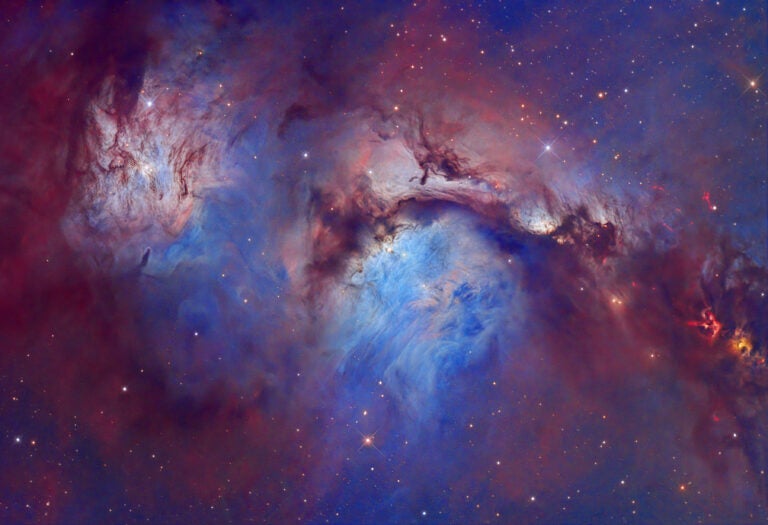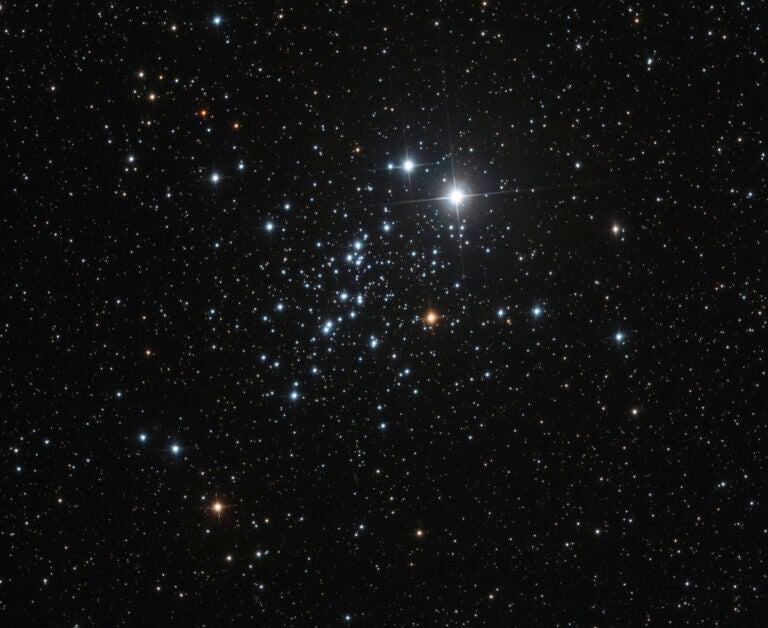Oh, the weather outside may be frightful and the fire inside delightful, but if it’s clear, amateurs worldwide head out to enjoy the winter sky. Setting up a telescope at this time of year may leave you cold, but that’s the beauty of binoculars. Pull them out of their case, and you’re ready to go.
And there’s plenty to look at. For this article, I’ve picked 10 of my favorites. You may already know some of them, but I bet others will be brand new to you.
Start by swinging your binoculars toward Orion the Hunter’s tiny triangular head. The triangle’s top star, Meissa (Lambda [λ] Orionis), along with several surrounding suns within about 1°, belong to the open cluster Collinder 69. This group contains some 20 stars ranging in brightness from 5th to 9th magnitude.
Our second target is the little-known cluster Collinder 65. It lies north of Orion’s head and spills into adjacent Taurus. The magnitude 3.0 cluster has ill-defined boundaries, but by adding in a few non-cluster stars to its north and east, you might be able to imagine a spear that Orion is about to heave at Taurus. Measuring about 8° tip to tip, “Orion’s Spear” fills out the frame of 7x binoculars well.
The Pirate Moon Cluster, also known as NGC 1647, is easy to find about half a binocular field (3°) northeast of the Hyades star cluster, the V-shaped group that, along with Aldebaran (Alpha [α] Tauri), makes up the Bull’s face. At first glance, this magnitude 6.4 object may seem like just a faint blur. But, with patience, you should make out at least a half-dozen dim points of light. Those are the brightest of more than 200 suns that call NGC 1647 home. Overall, the cluster looks diamond-shaped.
Stay in Taurus for NGC 1746, a large, loose open cluster that lies about halfway between Aldebaran and the tip of one of the Bull’s horns, Elnath (Beta [β] Tauri). NGC 1746 lies 6° northeast of NGC 1647, so through 7×50 binoculars, both will fit into the same field of view. NGC 1746 lacks the mistiness of its neighbor. Instead, look for about eight to 10 stars shining between magnitudes 5 and 9.
NGC 2244, one of the brightest non-Messier clusters in the sky, lies about a third of the way from Betelgeuse (Alpha Orionis) to Procyon (Alpha Canis Minoris). Its distinctive shape, formed by a half-dozen 6th- and 7th-magnitude stars set in a tiny rectangular pattern, is easy to spot. The brightest of the bunch, 12 Monocerotis, may look subtly yellow, while the rest are either white or slightly bluish.
If you’re viewing from a dark site, you just might notice a faint haze surrounding NGC 2244. That’s the dim glow of the Rosette Nebula (NGC 2237–9), a huge wreath-shaped cloud of ionized hydrogen that engulfs the star cluster.

